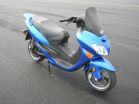(Press-News.org) Do rebelliousness, emotional control, toughness and thrill-seeking still make up the essence of coolness?
Can performers James Dean and Miles Davis still be considered the models of cool?
Research led by a University of Rochester Medical Center psychologist and published by the Journal of Individual Differences has found the characteristics associated with coolness today are markedly different than those that generated the concept of cool.
"When I set out to find what people mean by coolness, I wanted to find corroboration of what I thought coolness was," said Ilan Dar-Nimrod, Ph.D., lead author of "Coolness: An Empirical Investigation." "I was not prepared to find that coolness has lost so much of its historical origins and meaning—the very heavy countercultural, somewhat individualistic pose I associated with cool.
"James Dean is no longer the epitome of cool," Dar-Nimrod said. "The much darker version of what coolness is still there, but it is not the main focus. The main thing is: Do I like this person? Is this person nice to people, attractive, confident and successful? That's cool today, at least among young mainstream individuals."
In research that has developed over several years, Dar-Nimrod, currently a post-doctoral fellow in the Medical Center's Department of Psychiatry, and his colleagues recruited almost 1,000 people in the Vancouver, British Columbia, area, who completed an extensive questionnaire on the attributes, behaviors and individuals they associated with the word cool.
In the journal article, the research is described as the first systematic, quantitative examination of what characteristics recur in popular understandings of the cool personality.
The researchers conducted three separate studies. In Study 1, participants generated characteristics that they perceived to be cool. In Study 2, two samples of participants rated dozens of these characteristics on two dimensions: coolness and social desirability. In Study 3, participants rated friends both on their coolness and on a variety of personality descriptors that were identified as relevant in the other studies.
A significant number of participants used adjectives that focused on positive, socially desirable traits, such as friendly, competent, trendy and attractive.
"I got my first sunglasses when I was about 13," said Dar-Nimrod. "There wasn't a cooler kid on the block for the next few days. I was looking cool because I was distant from people. My emotions were not something they could read. I put a filter between me and everyone else. That, in my mind, made me cool. Today, that doesn't seem to be supported. If anything, sociability is considered to be cool, being nice is considered to be cool. And in an oxymoron, being passionate is considered to be cool—at least, it is part of the dominant perception of what coolness is. How can you combine the idea of cool—emotionally controlled and distant—with passionate?"
At some levels, participants in the study still appreciated the traditional elements of cool, such as rebelliousness and detachment, but not as strongly as friendliness and warmth.
"We have a kind of a schizophrenic coolness concept in our mind," Dar-Nimrod said. "Almost any one of us will be cool in some people's eyes, which suggests the idiosyncratic way coolness is evaluated. But some will be judged as cool in many people's eyes, which suggests there is a core valuation to coolness, and today that does not seem to be the historical nature of cool. We suggest there is some transition from the countercultural cool to a generic version of it's good and I like it. But this transition is by no way completed."
Dar-Nimrod's main research interests are the effects of genetics and social environment on decision-making and health behaviors. The coolness research began when Dar-Nimrod was a doctoral student at the University of British Columbia. He and a fellow student, Ian G. Hansen, a co-author of the Journal of Individual Differences article and currently an assistant professor at York College of City University of New York, argued over whether Steve Buscemi, an actor in the movie "Fargo" and the cable television series "Boardwalk Empire," is cool.
"Ian thought Buscemi was cool and I could not accept him as cool because he was so unattractive and seemed such a weasel," Dar-Nimrod said. "That got us thinking about just what coolness is."
The coolness findings could point to possible health impacts.
"Coolness may have some relevance to health behaviors," Dar-Nimrod said. "Smoking or drug use, for example, could be connected with a view of coolness that includes rebelliousness or a countercultural stance. This can inform future health research on behaviors. Is coolness related to people's choice of unhealthy behaviors, such body modifications, unprotected sex or even eating behaviors?"
INFORMATION:
In addition to Dar-Nimrod and Hansen, authors of "Coolness: An Empirical Investigation" include: Travis Proulx, Ph.D., of the Tilburg University in The Netherlands, Darrin R. Lehman, Ph.D., of the University of British Columbia, and Paul R. Duberstein, Ph.D., and Benjamin P. Chapman, Ph.D., of the University of Rochester Medical Center.
END
7 June 2012: Element Six, the world leader in synthetic diamond supermaterials, working in partnership with academics in Harvard University, California Institute of Technology and Max-Planck-Institut für Quantenoptik, has used its Element Six single crystal synthetic diamond grown by chemical vapour deposition (CVD) to demonstrate the capability of quantum bit memory to exceed one second at room temperature.
This study demonstrated the ability of synthetic diamond to provide the read-out of a quantum bit which had preserved its spin polarisation for several minutes and ...
Find Me Gluten Free, the most downloaded gluten-free restaurant and business finder app for iPhone and Android announces partnership with Brandy Wendler, Mrs. Alaska International 2012 to create awareness for the Celiac Disease and Gluten Free Community.
Find Me Gluten Free rates businesses on how gluten-free friendly they are, making it easier to find a restaurant which users can be confident will take preparing a gluten-free meal seriously, along with serving as a brand-finder at stores nationwide.
Brandy Wendler was diagnosed with Celiac Disease in 2008. It was ...
The NationaLease Spring Maintenance Managers Meeting in Greenville, SC, in May provided attendees with a stimulating mix of technology, product, and professional education, as well as a strong measure of motivation and inspiration provided by its keynote speaker, Jay Blake, racing's only blind race crew chief.
The four-day event also included a ceremony announcing NationaLease's Exceptional Service Award winners, which are NationaLease member companies that provided particularly outstanding reciprocal road service to fellow members throughout the year. "This year's ...
University of Notre Dame network physicists Mária Ercsey-Ravasz and Zoltán Toroczkai of the Interdisciplinary Center for Network Science and Applications, in collaboration with food science experts, have recently published a rigorous analysis of the international food-trade network that shows the network's vulnerability to the fast spread of contaminants as well as the correlation between known food poisoning outbreaks and the centrality of countries on the network.
Together with food science experts József Baranyi, from the Institute of Food Research in the U.K., and ...
RICHMOND, Va. (June 7, 2012) – A new study from the Virginia Commonwealth University School of Medicine has identified molecular changes responsible for abnormal cholesterol production and metabolism in the livers of patients with a common liver condition, and these changes may explain the severity of a patient's liver disease and risks to their heart health.
It is estimated that a third of Americans have a fatty liver. Nonalcoholic fatty liver disease is a very common liver condition. Nonalcoholic steatohepatitis, or NASH, the more aggressive form of nonalcoholic fatty ...
Earlier in the week the US government confirmed economic growth in America had stalled during the first-quarter of the year, as gross domestic product (GDP) rose by just 1.9% from January through to May, reports currency exchange experts, Currencies Direct.
Initially the department of commerce expected GDP to be around the 2.2% mark. However, cuts in private sector jobs were said to have stained prior optimism.
According to figures published by outplacement firm Challenger, Gray & Christmas, US employers cut 61,887 jobs in May, the most since September 2011. ...
Prenatal screening for Down syndrome (DS) is still in need of improvement. Perinatal medicine experts have worked hard to find new biomarkers for screening of DS. Dr. Shi he Shao and his co-investigators, from Jiangsu University and Changzhou Woman and Children Health Hospital, report in the May 2012 issue of Experimental Biology and Medicine that they have successfully identified twenty-nine differentially expressed proteins in maternal serum from pregnancies carrying DS fetuses with proteomic approaches. These differential proteins offer the possibility of improving the ...
Tim Hanni's New Wine Fundamentals Webinars, held for the first time in May, attracted international attendance and will be repeated June 19 and 23. The webinar offers an introduction to taste and other sensations, improved wine communications, and a new paradigm for understanding the physical and psychological factors in wine preferences and consumer behavior. One attendee wrote, "It altered the way I work...(Tim) is challenging us to align the 'rules' to the reality of our customers."
The Webinar is a two-hour "learn and train the trainer" session ...
VIDEO:
A cold front approaching from the west spawned severe storms along the East Coast, on June 1, 2012, including nine weak tornadoes in Maryland around sunset. From the GOES satellite...
Click here for more information.
On Friday, June 1, 2012 severe weather generated 9 weak tornadoes across Maryland, according to the National Weather Service. As the system that generated them approached, NASA's Aqua satellite gathered information about power behind it. NASA also created ...
The launch of the 5000 LA might seem a bit in conflict with the ZEV image of high performance. ZEV is mostly known for its high tech, 100 mile (160 km) range / 75 - 80 mph (120 - 130 kmh) speed lithium battery powered bikes. Equally, the public has seemed to keep its focus on new and exotic battery technology. But for the vast majority of the population, their needs and use patterns could best be served by a new approach, rather than a new technology. The vast majority of the public needs a vehicle to commute to work less than 20 miles. The achieved goal of the new 5000 ...



